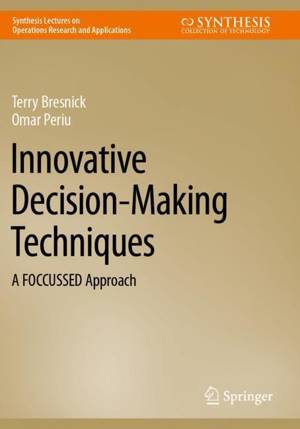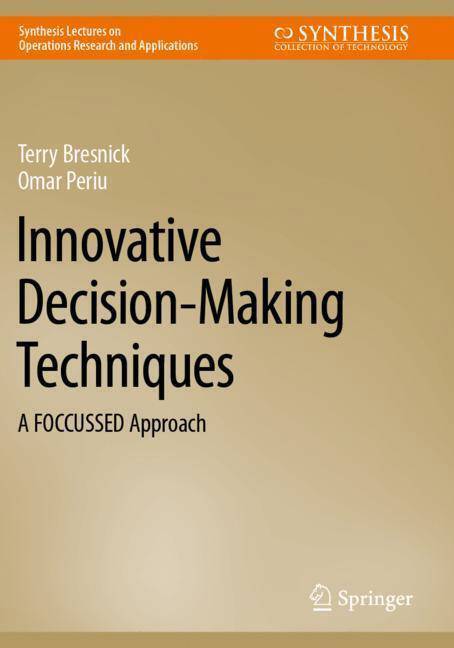
- Retrait gratuit dans votre magasin Club
- 7.000.000 titres dans notre catalogue
- Payer en toute sécurité
- Toujours un magasin près de chez vous
- Retrait gratuit dans votre magasin Club
- 7.000.0000 titres dans notre catalogue
- Payer en toute sécurité
- Toujours un magasin près de chez vous
52,95 €
+ 105 points
Format
Description
This book provides a blend of quantitative and qualitative approaches to decision making, while also bridging the gap between the theory of how to make good decisions versus how people actually make decisions. The authors present the tools and techniques of decision analysis to learn how to become a FOCCUSSED decision maker:
- Identify and properly Frame the decision or problem at hand
- Specify the goals, Objectives, and values that you are trying to achieve
- Develop creative, meaningful Choices from among which you can choose
- Evaluate the Consequences of selecting each alternative using your goals, objectives, and values
- Think about the key Uncertainties that could impact the decision
- Understand the Swaps and trade-offs that you are willing to make
- Develop an approach for implementing your Solution
- Elicit the data you'll need from a variety of sources
- and Disseminate and communicate your decisions to others.
Spécifications
Parties prenantes
- Auteur(s) :
- Editeur:
Contenu
- Nombre de pages :
- 150
- Langue:
- Anglais
- Collection :
Caractéristiques
- EAN:
- 9783031112829
- Date de parution :
- 22-09-23
- Format:
- Livre broché
- Format numérique:
- Trade paperback (VS)
- Dimensions :
- 170 mm x 244 mm
- Poids :
- 281 g

Les avis
Nous publions uniquement les avis qui respectent les conditions requises. Consultez nos conditions pour les avis.






